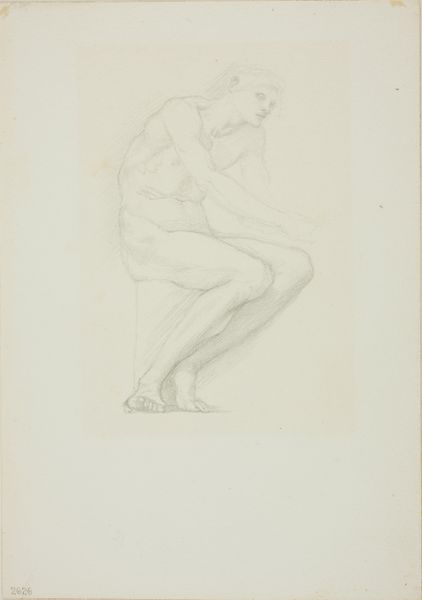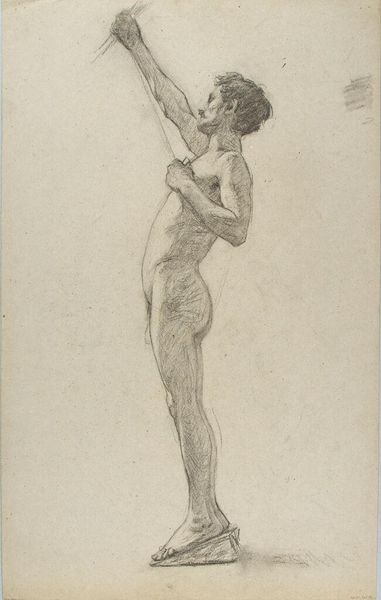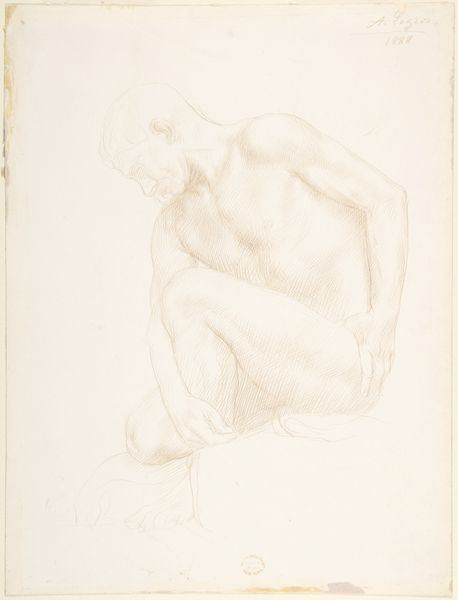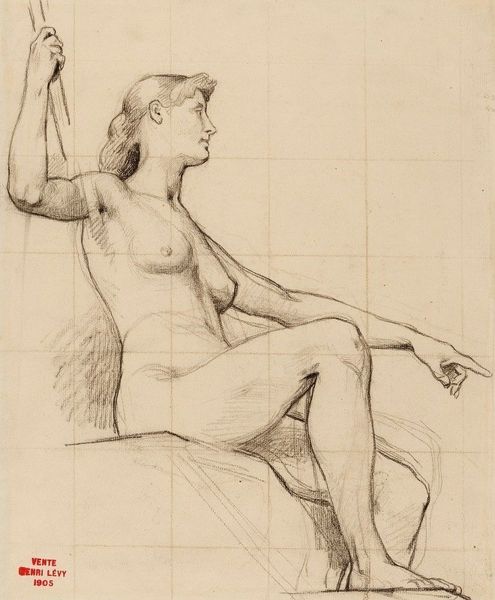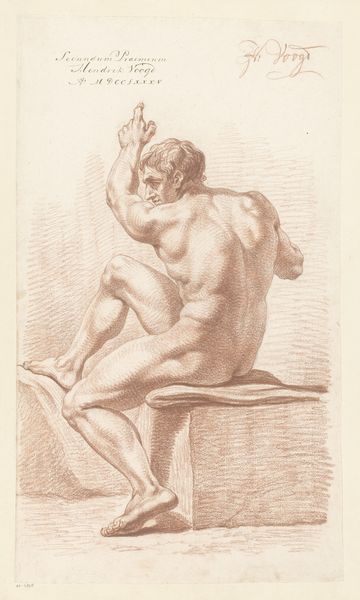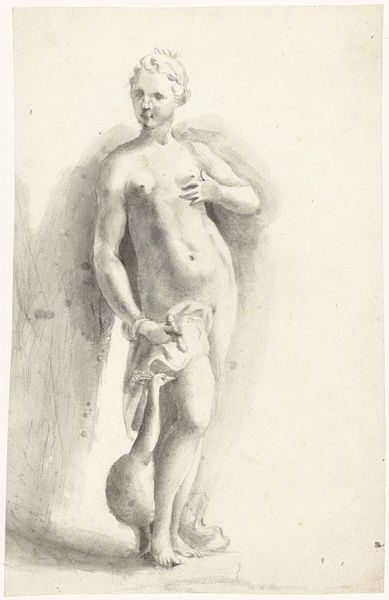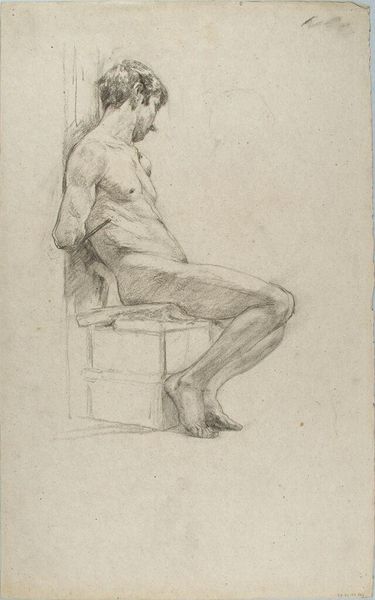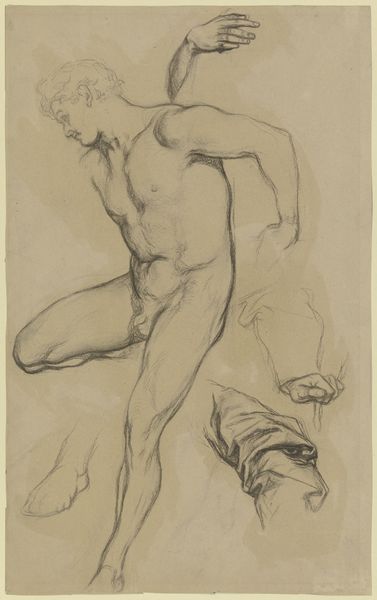
drawing, pencil
#
portrait
#
pencil drawn
#
drawing
#
medieval
#
pencil sketch
#
classical-realism
#
figuration
#
pencil drawing
#
pencil
#
portrait drawing
#
academic-art
#
nude
Dimensions: height 573 mm, width 425 mm
Copyright: Rijks Museum: Open Domain
Editor: So, this is "Zittend mannelijk naakt, naar links," or "Seated Male Nude, Facing Left," by Jean Grandjean, dating back to between 1765 and 1781. It's a pencil drawing, and there’s something very immediate about the figure… it feels like we’re seeing the artist’s hand at work, and I wonder, what are we meant to notice here? Curator: Let’s consider the context of pencil as the medium, and its use. This isn’t oil paint destined for a palace, is it? The ready availability and relative cheapness of pencil meant it was increasingly accessible during this period. We can also examine the historical context—Academic Art; so how are those material circumstances contributing to the kind of work that’s made? Is this a study, a teaching tool, or something else entirely? Editor: That’s a good point, I hadn't thought about the accessibility of pencil as a material. It looks like this could well be a study – you can almost feel the artist working out the pose and musculature. Curator: Precisely. Think about the labor involved. The artist meticulously renders the male figure with readily accessible means. Is there a relationship, perhaps, between the supposed higher status of the male nude as a subject, and the relatively lower status of drawing? It is rendered, and perhaps elevated, through the application of skilled labor? Editor: So, by focusing on the *how* it’s made, and *what* it’s made of, we can understand more about the context and even the perceived value of the artwork? Curator: Exactly! The materials, the process, they're not neutral. They shape how we see and understand the artwork. Now what do you see? Editor: That's a really interesting way to think about it. I always focused on the composition itself, but now I'm curious about the social implications tied to art’s materiality. Curator: Indeed! By attending to the materials, process, and broader contexts, we open doors to fresh insights!
Comments
No comments
Be the first to comment and join the conversation on the ultimate creative platform.
